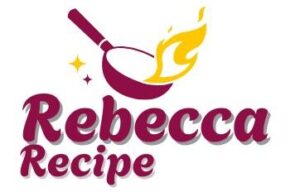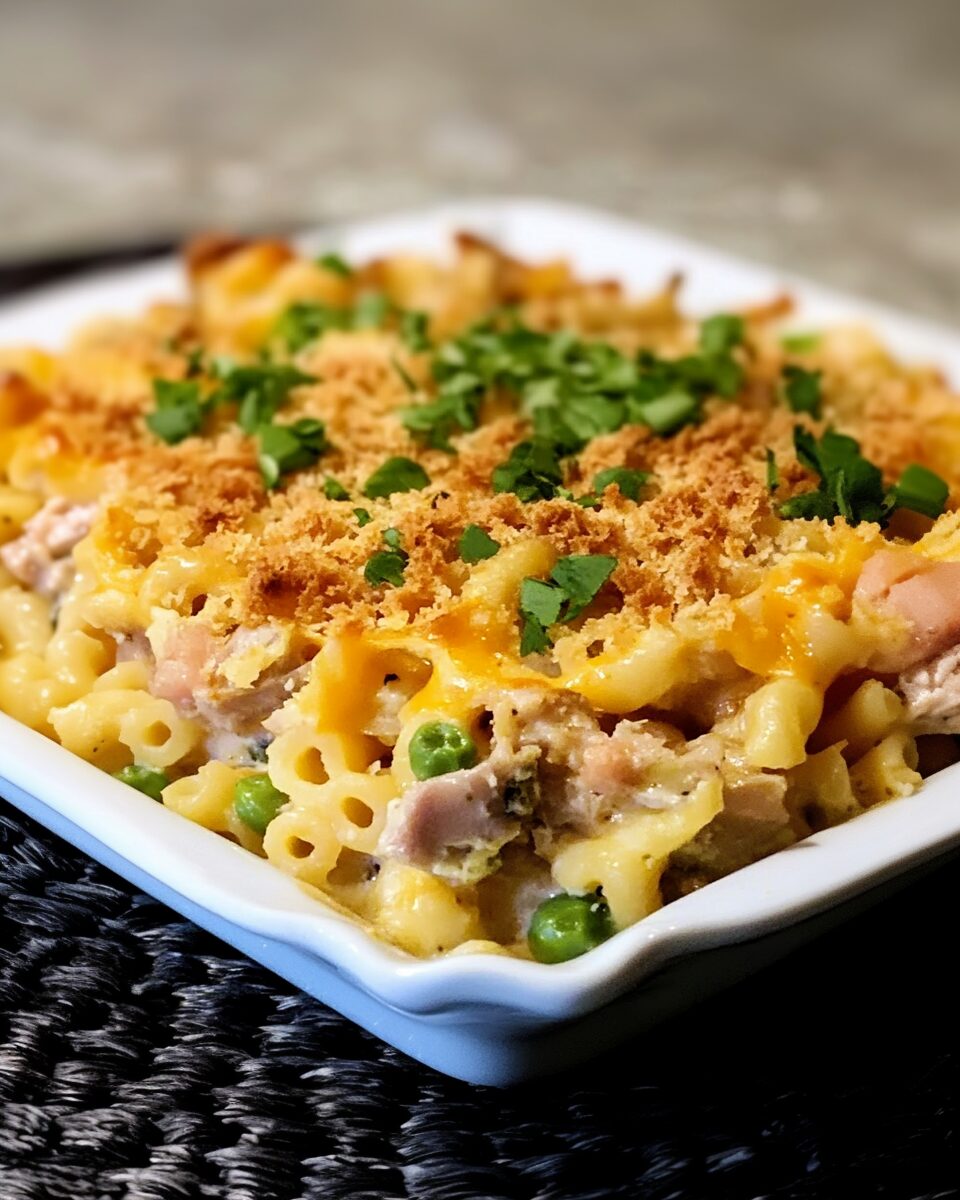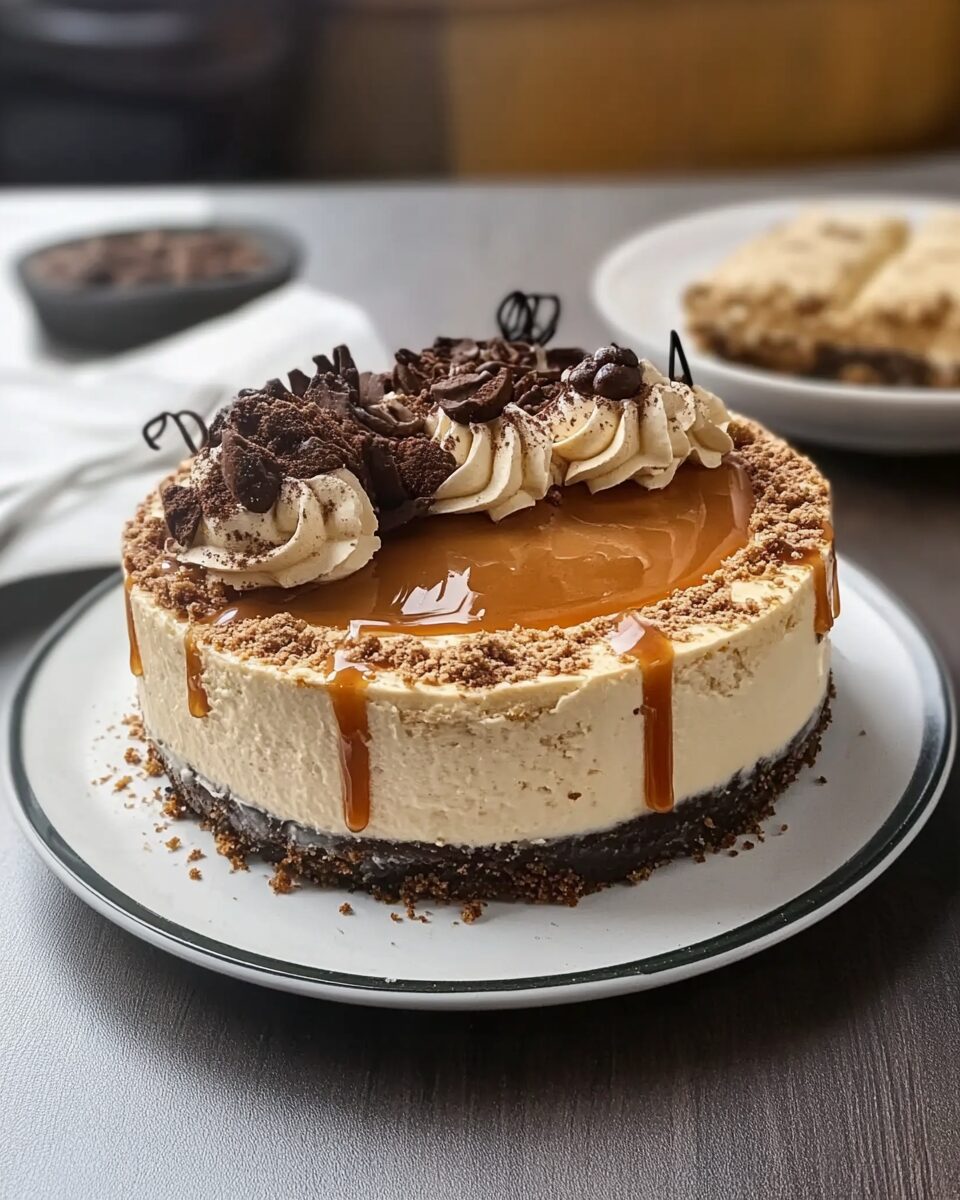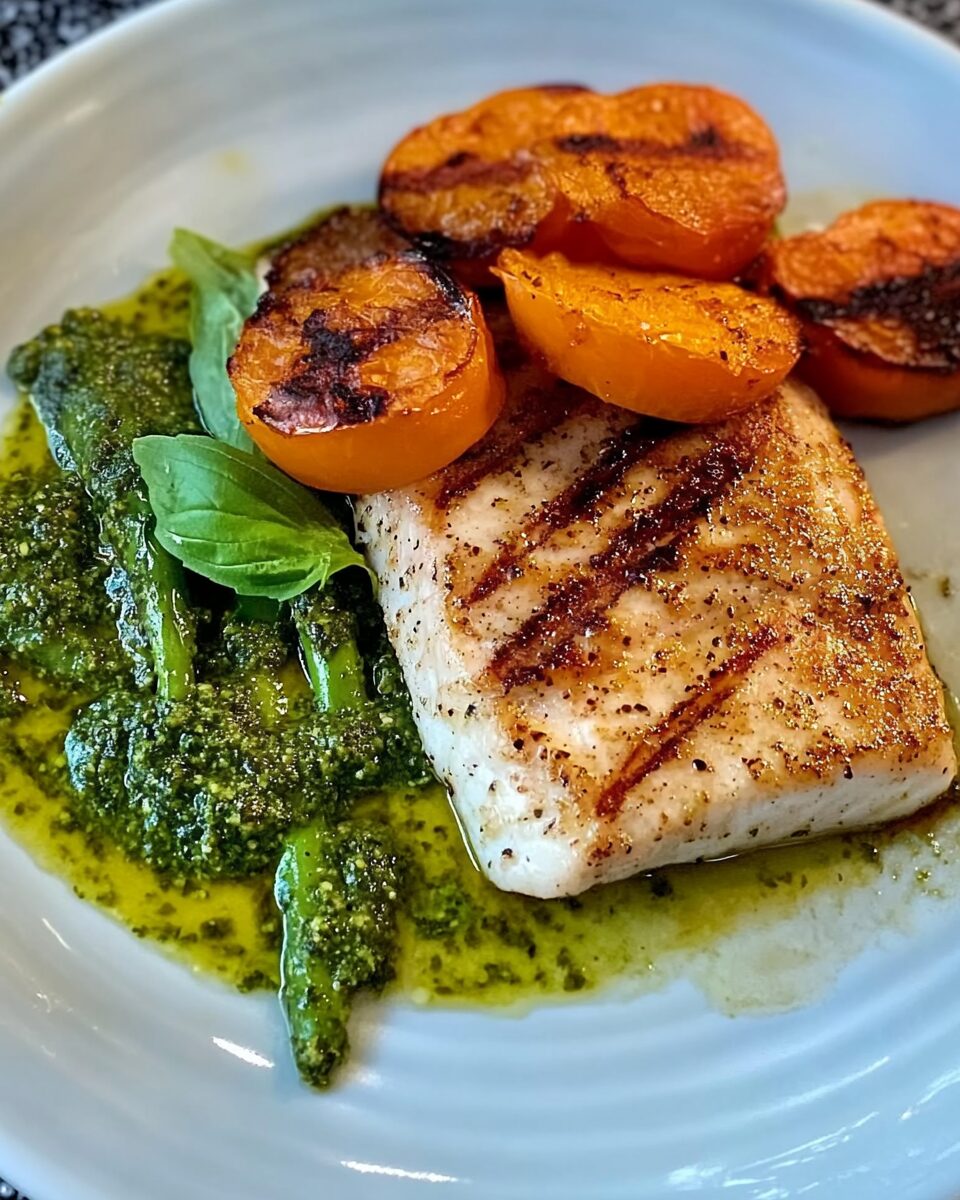This Easy Tuna Casserole is a classic comfort dish that combines tender pasta, savory tuna, and creamy mushroom sauce, all baked to perfection. It’s a quick and satisfying meal, ideal for busy weeknights or family gatherings.
Full Recipe:
Ingredients
- 1 (12-ounce) package egg noodles
- 2 cups frozen green peas
- 2 (10.5-ounce) cans condensed cream of mushroom soup
- 2 (5-ounce) cans tuna, drained
- 10 slices American processed cheese
- 1 onion, chopped
- Ground black pepper, to taste
Directions
-
Preheat the oven to 350°F (175°C).
-
Bring a large pot of water to a boil. Add egg noodles and frozen peas; cook until noodles are al dente, about 8 to 10 minutes. Drain well and return to the pot.
-
Stir in condensed cream of mushroom soup, drained tuna, American cheese slices, chopped onion, and ground black pepper. Mix until well combined and the cheese has melted.
-
Transfer the mixture to a 9×13-inch baking dish.
-
Bake in the preheated oven until heated through, about 20 to 25 minutes.
Nutrients
- Calories: 545 kcal
- Total Fat: 20g
- Saturated Fat: 10g
- Cholesterol: 93mg
- Sodium: 1,523mg
- Total Carbohydrates: 58g
- Dietary Fiber: 4g
- Protein: 32g
History and Origin of Tuna Casserole
The origin of tuna casserole in American cuisine can be traced back to the mid-20th century, particularly around the 1950s. During this era, post-war households embraced recipes that were economical, easy to prepare, and used pantry staples. Casseroles became increasingly popular as they offered a way to stretch ingredients and feed large families without requiring complex cooking techniques or expensive components.
Tuna casserole specifically rose to fame due to the widespread availability of canned tuna, canned soup, and dried pasta—all inexpensive and shelf-stable ingredients. Its popularity was further bolstered by community cookbooks, women’s magazines, and food companies that promoted such recipes as modern, efficient, and family-friendly.
The earliest versions of tuna casserole often included egg noodles, canned cream of mushroom soup, canned peas, and crushed potato chips or breadcrumbs on top for texture. Over the years, countless variations have evolved, adapting to different tastes, dietary needs, and ingredient availability.
Why It’s a Classic Comfort Food
Comfort food is characterized by its ability to evoke feelings of nostalgia, warmth, and satisfaction. Tuna casserole fits perfectly within this definition. The combination of creamy sauce, tender noodles, and savory tuna creates a dish that is both soothing and filling.
Many people associate tuna casserole with childhood memories, family dinners, or cozy meals during cold weather. Its mild flavors make it appealing to children, while its heartiness satisfies adults. Additionally, the dish’s rich, creamy texture and slightly crispy top layer provide a sensory experience that’s both indulgent and familiar.
Cultural Impact and Presence in American Homes
Over the decades, tuna casserole has maintained its presence in American kitchens. While culinary trends have shifted and global flavors have become more mainstream, traditional dishes like tuna casserole continue to endure. Its reliability and adaptability make it a timeless option.
Casseroles in general are symbolic of American communal eating, often prepared for potlucks, church gatherings, school events, and family reunions. Tuna casserole, in particular, represents the quintessential mid-century homemaker’s ingenuity—turning simple pantry items into something greater than the sum of its parts.
Moreover, the dish has appeared in pop culture, including sitcoms and films, as a shorthand for simple, suburban home-cooking. Its mention often brings a sense of nostalgia or humor, further cementing its place in cultural memory.
Modern Variations and Customizations
Today’s home cooks continue to reinvent the tuna casserole with creative twists. While the classic version remains beloved, many people experiment with different ingredients to enhance nutrition, flavor, or accommodate dietary restrictions.
Some modern adaptations include:
-
Using whole wheat or gluten-free pasta for a healthier or allergy-friendly base
-
Replacing canned soup with homemade béchamel or cream sauces for a fresher, less processed taste
-
Adding vegetables like mushrooms, bell peppers, spinach, or zucchini to boost the nutritional profile
-
Substituting cheeses—cheddar, mozzarella, gouda, or even goat cheese—for varied flavor profiles
-
Topping with panko breadcrumbs, parmesan, or crispy onions for added crunch and a gourmet finish
-
Incorporating spices and herbs such as garlic, thyme, paprika, or Dijon mustard to deepen complexity
These changes show how tuna casserole remains a flexible canvas for culinary creativity while staying rooted in its comforting core.
Nutritional Overview
Tuna casserole is not only tasty but can be relatively balanced when prepared with care. It offers a solid source of protein from tuna, carbohydrates from pasta, and essential nutrients from added vegetables. The classic version, however, can be high in sodium and saturated fat due to canned soups and processed cheese.
Mindful preparation allows for a healthier rendition without compromising taste. Swapping in low-sodium soup, using reduced-fat cheese, and adding fiber-rich vegetables can significantly improve the dish’s nutritional value. For those monitoring their intake, portion control and side pairings with salads or steamed vegetables can round out a wholesome meal.
Meal Planning and Storage Benefits
One of the biggest advantages of Easy Tuna Casserole is its convenience. It’s a perfect make-ahead meal, whether you’re meal prepping for the week or stocking your freezer for busy nights. The casserole holds up well in the fridge for several days and can be frozen for up to two months when stored in an airtight container.
To reheat, simply place it in the oven covered with foil until warmed through, or microwave individual portions. It’s a fantastic option for families on the go, students, or anyone who appreciates having comforting food ready without the daily hassle of cooking.
Budget-Friendly Appeal
Another reason for the casserole’s lasting popularity is its affordability. With just a few inexpensive pantry items, you can create a filling dish that serves multiple people. This makes it ideal for households on a tight budget, especially when compared to ordering takeout or preparing meat-based entrees.
Tuna, in its canned form, is among the most economical protein sources, and ingredients like pasta, frozen peas, and soup concentrate are widely accessible and low-cost. Even with added vegetables or gourmet toppings, tuna casserole remains a frugal yet satisfying meal option.
Family-Friendly Nature
Tuna casserole’s gentle flavors and creamy texture make it widely accepted by children and picky eaters. It’s easy to serve, easy to eat, and lacks any overpowering or exotic ingredients that might cause hesitation. For parents trying to introduce more seafood or vegetables into their children’s diets, this dish serves as a perfect starting point.
Additionally, children can often help with preparation—stirring the mix, layering the ingredients, or sprinkling on the topping—turning dinner into a fun, family-involved activity.
Tuna as a Sustainable Seafood Option
Sustainability has become a growing concern in food choices, especially with seafood. Many canned tuna brands now source their fish responsibly and label their products accordingly. Consumers can look for tuna labeled as “pole-and-line caught” or certified by organizations that track sustainable fishing practices.
Tuna, especially skipjack and albacore varieties, can be harvested with relatively low environmental impact when done properly. Choosing ethically sourced tuna supports ocean health and ensures that comforting dishes like tuna casserole align with modern values of environmental stewardship.
Serving Suggestions and Pairings
Tuna casserole can be served as a standalone dish or accompanied by complementary sides. Because of its richness, it pairs well with lighter, refreshing sides to balance the meal. Here are a few serving ideas:
-
Mixed greens salad with vinaigrette
-
Steamed or roasted broccoli, green beans, or carrots
-
Fresh fruit like melon, apple slices, or grapes
-
Garlic bread or crusty dinner rolls
-
A light soup such as tomato or vegetable for a two-course meal
Beverage pairings can include sparkling water, lemonade, or a light white wine like Sauvignon Blanc or Pinot Grigio for adult diners.
Ideal Occasions to Serve Tuna Casserole
Tuna casserole fits effortlessly into a wide range of occasions:
-
Weeknight dinners: Quick to prepare and satisfying after a long day.
-
Potlucks and gatherings: Easy to transport and serve to a crowd.
-
Meal trains: Perfect to deliver to a friend or neighbor in need of comfort.
-
Holiday leftovers: Great for incorporating pantry items between holiday feasts.
-
Lunchbox portions: Ideal for reheating at school or work.
Its reliability makes it a valuable addition to any meal rotation.
Conclusion
Easy Tuna Casserole remains a beloved dish because it satisfies the most important qualities of home cooking—comfort, practicality, and adaptability. With deep roots in mid-20th century American kitchens, it has endured through the decades thanks to its affordability, ease, and nostalgic appeal.








